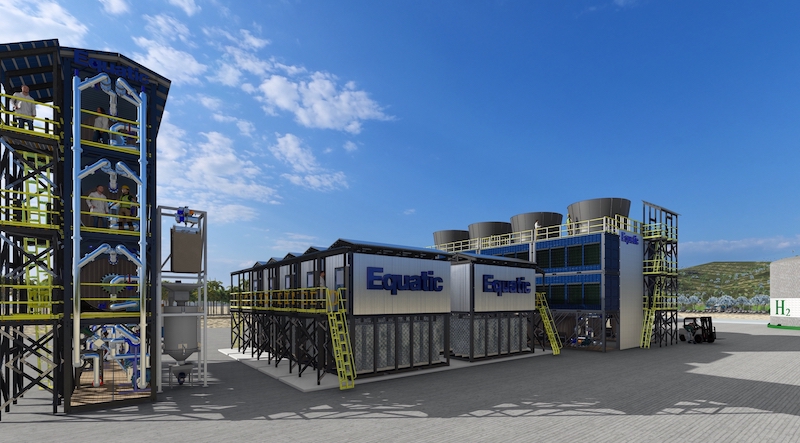A US startup that has developed tech to remove carbon from the atmosphere and seawater has announced plans to build the world’s largest ocean-based CO2 removal plant in Singapore this year.
Equatic, a firm founded by scientists from the University of California, said on Tuesday it would work with Singapore’s National Water Agency (PUB) and UCLA on the project, which aims to remove 10 tonnes of carbon dioxide a day.
The carbon dioxide removal (CDR) plant to be built in Tuas, Singapore, is expected to create 300 kilograms of carbon negative hydrogen a day.
ALSO SEE: Tougher Penalties in China for Firms Understating Emissions
Work on the plant, classed as a “demonstration project” and named Equatic-1, will start in mid-2024 and take 18 months to complete.
The $20-million (S$26.9 million) project will be co-funded by Singapore’s PUB and the city-state’s National Research Foundation (NRF), plus UCLA’s Institute for Carbon Management (ICM).
This follows the successful operation of two pilot projects last year in Singapore and Los Angeles.
“This plant is the essential next step towards carbon dioxide removal at a globally relevant scale and a competitive price,” Lorenzo Corsini, Equatic’s principal adviser, said.
“We are on track to deliver a replicable, easy-to-manufacture electrochemical reactor — the beating heart of our CDR technology — that will bring removal costs below the $100 per tonne industry target well before 2030.”
Electrolysis used to break water into hydrogen, oxygen
Equatic’s process focuses on the ocean’s ability to store carbon dioxide and uses electrolysis to remove dissolved CO2 and enhance its capacity to absorb more of the greenhouse gas.
An electrical current is passed through seawater brought in from the adjacent PUB desalination plants to break down water into carbon-negative hydrogen and oxygen.
The plant will use four inputs: seawater, air, rock and renewable energy.
“Equatic will pass an electrical current through seawater (electrolysis) and then pass atmospheric air through the processed seawater (direct air capture),” it said.
“These steps trap CO2 in solid minerals and as dissolved substances that are naturally found in the oceans, ensuring that the trapped CO2 will remain securely stored for 100,000-plus years.
“Finally, Equatic will use rock to neutralize the processed seawater and to preserve the ocean’s chemistry.”
Goal of global deployment
Equatic, PUB and ULCA have been working together on methods to eliminate carbon that can be scaled for global deployment. Some of this been funded by heavyweight investors in the United States.
The new plant, they say, “will demonstrate improvements in the unit cost per tonne of CO2 removed using the electrochemical reactors manufactured by Equatic.”
If the plant meets its goals, Equatic plans to commercialise the technology and launch commercial plants that can remove nearly 110,000 metric tonnes of carbon dioxide a year, according to a report by Singapore’s Channel News Asia, which said that would be equivalent to the CO2 produced by 25,000 people.
By 2028 it hopes to be removing millions of tons of carbon a year, at a cost of under $100 a ton.
The Singapore plant will have a modular system that allows the performance of individual units to be staged and stacked to allow systematic and rapid expansion, Equatic said.
The units employ oxygen-selective anodes developed with the support of the Department of Energy’s Advanced Research Projects Agency-Energy (ARPA-E) to produce carbon-negative hydrogen, while eliminating the unwanted production of chlorine gas.
And this, they claim, should open a pathway to carbon removal at gigaton scale, and co-production of carbon-negative hydrogen to support decarbonization in hard-to-abate industries, it said.
Equatic’s work has featured in Time magazine, which noted that the airline giant Boeing has signed a deal with the group to purchase hydrogen.
- Jim Pollard
ALSO SEE:
China Told to Expect More Heatwaves, Extreme Weather in 2024
China Says it Will Make Half the World’s Cleaner Ships by 2025
Cities Lead COP28 Climate Change Push as Nations Fail to Deliver
Typhoons, Landslides, Sandstorms Cost China $42bn This Year
China Adds Himalaya Peak Weather Station Amid Climate Concerns
Global Warming Rocks the Qinghai-Tibet Plateau – China Dialogue
























